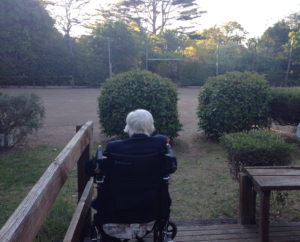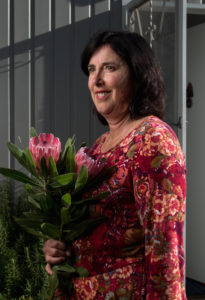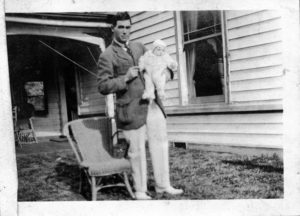Research Page
Profiteering: the disgrace infecting aged care homes

More than 160,000 Australians live in an aged care home. Recent media reports have highlighted inadequate personal care, neglect, abuse and negligence suggesting that the quality of care in some aged care homes is a disgrace.
To read more http://www.smh.com.au/comment/aged-care-providers-seeking-profit-instead-of-residents-wellbeing-20160527-gp5pg2.html
Preventable nursing home deaths surge
The Age, Michael Bachelard
Sarah Russell’s mother, Joan, died in a nursing home in September 2015. She believes the death was premature.
“When my mother was engaged, she was terrific. When she was alone and not engaged, she’d suffer anxiety … [and] she would get up and walk,” Dr Russell, a public health researcher, said.
Dr Russell gave up work to look after her, but she could not be there at all times, so she attached a note to her mother’s walking frame to warn the personal care assistants at the aged care facility not to leave her walker within reach.
One day, in the dining room after lunch, they did.
“She got up and walked, fell over. She didn’t break her hip, but she did damage her ribs, and six weeks later she was dead. The GP made the connection between the fall and her decline … I think the fall hastened her death.”

Here’s why we need nurse-resident ratios in aged care homes
Registered and enrolled nurses now account for less than 27% of this workforce, while personal care attendants (PCAs) make up 68%. Much of the hands-on care that registered and enrolled nurses once provided is now being provided by PCAs.
To read more https://theconversation.com/heres-why-we-need-nurse-resident-ratios-in-aged-care-homes-59682
Market must stay out of aged care
Published in Courier Mail on 27 March 2017
Last month the Courier Mail reported yet another heart breaking story about aged care homes (Aged care nightmare: man’s scrotum ‘left bleeding’, 20th February). Many of us were shocked because we assume elderly Australians receive high quality care in aged care homes.
The Federal Government is promoting its reforms in the aged care sector as supporting a consumer driven and market-based system. However, the “consumers” in aged care homes are often frail, elderly people, many with dementia. How can they demand a high quality service on the free market?
There are around 2,600 aged care homes in Australia. Although some are excellent, many aged care homes operate without enough staff. Managers who are under pressure to meet their profit targets do so by reducing staff, placing vulnerable residents at risk.
Staff in aged care homes are often hard-working, dedicated people doing a very difficult job for not much pay. When an aged-care home has insufficient staff, there may not be time for staff to walk residents to the toilet or even help them out of bed. All too often relatives feed, shower and dress residents because staff are too busy.
A key to quality healthcare is a good staff-patient ratio. However, unlike hospitals, there is no federal legislative requirement for aged-care homes to have mandated staff-to-resident ratios or skill prerequisites. The decision whether to have a registered nurse on duty is at the discretion of the provider.
When registered nurses are on duty in aged care homes, residents have better health outcomes, a higher quality of life and fewer hospital admissions. However, registered nurses now account for less than 27% of this workforce, while personal care attendants make up 68%.
Some personal-care attendants gained their qualification to work in an aged care home after completing a five-week course. It is inconceivable that someone with only five weeks of training is qualified to provide competent care, particularly when there is no registered nurse on duty to supervise them. Is it any wonder relatives’ submissions to recent inquiries into aged care have highlighted inadequate personal care, neglect, and negligence?
Relatives complain because residents’ needs are unmet – when incontinence pads are not changed regularly, when bruises appear or skin tears, and when pressure sores are not treated appropriately, in some cases turning gangrenous. Complaints are also made when residents suffer from malnutrition and/or dehydration and are chemically restrained. The list goes on.
The accreditation process should play an important part in monitoring the standards of care in all aged-care homes, including whether adequate numbers of skilled staff are employed. The current accreditation standards are woefully inadequate.
Coronial inquests into separate deaths at two aged care homes in Melbourne, BUPA Kempsey and Arcare Hampstead, exposed inadequate care. Yet both BUPA Kempsey and Arcare Hampstead were fully accredited by the regulator, the Aged Care Quality Agency, with perfect scores of 100 per cent in all criteria. This suggests something is wrong with the accreditation processes.
Following the coronial inquiries, the Aged Care Quality Agency did not change the accreditation processes. Vague phrases such as “sufficient staff” continue to be used. In some cases, sufficient staff means no registered nurse on duty. It may also mean an inadequate number of personal-care attendants.
When taxpayers are subsidising the care of elderly people, the public’s investment needs to be protected in the form of regulation, mandated staff ratios and a rigorous accreditation system. The care of vulnerable older people is too important to be left to the whims of the free market.
Published in Courier Mail on 27 March 2017
Infantilising older women to disguise financial abuse

What would make a man eulogise about his dead father at his mother’s funeral and then propose a toast to his “mother and father”?
This eulogy was more than your garden-variety misogyny. It was misogyny on steroids.
Listening to the eulogy, I was transported back to the to the Victorian era. In those days, a wife lost her personal identity when she acquired her husband’s name. A wife became her husband’s property, his chattel.
Victorian marriage and property laws stipulated that a married woman did not have a separate legal existence from her husband. A married woman was a dependent, like an underage child or a slave, and could not own property in her own name or control her own money.
The laws changed over a hundred years ago. Thankfully so too did attitudes towards married women. Older women may be the last bastion of Victorian traditions.
Some older women are treated like an underage child after their husband dies. They are encouraged to appoint a financial power of attorney because older women, particularly those who have not been the family’s breadwinner, are assumed to be incapable of managing their own financial affairs. Not only is this patronising but also it disempowers older women.
The ultimate act of disempowerment is when an older woman is declared legally incapable. According to the Office of the Public Advocate, older women are more likely to be declared legally incapable than older men. This may be due to the fact that women live longer than men. It may also suggest that older men are revered while older women are infantilised.
Once an older woman is declared legally incapable, an enduring power of attorney, both financial and medical, is appointed. The financial powers of attorney take complete control of their mother’s financial affairs. The older woman is then transported back to the Victorian era. She loses control of her own money, just like a young child.
Financial powers of attorney are required to act in the older woman’s best interest. If they don’t, it is financial elder abuse.
There is little reliable data on the extent of financial elder abuse. State Trustees Victoria found that women over the age of 80 are most at risk of financial elder abuse. They found that adult sons were the most common perpetrators of financial elder abuse.
Financial elder abuse may begin with the best intentions – with children acting as their mother’s financial power of attorney thereby managing her finances. This can quickly progress to a sense of entitlement, particularly when adult children have mortgages or debts.
In some families, children are not willing to wait for their inheritance until after their mother dies. They assume what was once ‘Mum and Dad’s money’ is now their money, not their mothers’ money. They may even curtail the amount of money their mother spends.
There have been several high-profile trust fund disputes in which sons have sued their mothers. In one case, a former pupil of a private boys school in Sydney sued his mother after the family estate was left to his mother rather than to him. This “old boy” was castigated by the judge for having a “highly developed and unhealthy sense of entitlement“.
Financial elder abuse is currently not a criminal offence in Australia. It is treated as a private issue, like family violence was treated during the Victorian era – before the work feminists did to make it a public issue. For financial elder abuse to become a criminal offence, attitudes towards older people, particularly older women, need to change.
Published in Women’s Agenda 19 November 2015
Response from Richard Colbeck’s office via Department of Health.
Behind the petition
Letter, The Sunday Age
A month ago, the Aged Care Guild began a campaign called “Protect Aussie aged care”. It launched a petition asking for signatures in a bid to pressure the government into providing more funding. How many people signed the petition not realising they were supporting some of the most profitable providers in the aged care industry? The Aged Care Guild represents the largest nine aged-care companies: BUPA, Japara, Regis, Estia, Allity, Arcare, McKenzie, Blue Cross and Opal. These companies are now the fastest-growing owners of aged care homes in Australia. According to their annual reports (2015-16), Japara made a profit of $30 million – up 5.6 per cent; and Estia $51.8 million – up 16 per cent. These large profits depend on substantial government subsidies.
This campaign resembled “astroturfing” – although the campaign mimicked a grassroots movement, it was run by a highly paid lobby group.
With the recent horror stories about the quality of care in residential aged care homes, including maggots being found in a resident’s mouth at an Opal aged care home, we need to feel reassured that government subsidies are used to improve the quality of life of residents, not go into the pockets of providers.
Sarah Russell, Aged Care Matters
Aged care cries out for humanity, and close scrutiny
Letter, The Australian
Andrew Burrell’s expose of the disgrace that is aged care residential assessment and accreditation is both excellent and long overdue (“Aged-care checks for neglect ‘failing’”, 29/4 – see below). What currently passes for assessment and accreditation in residential homes — whether in the for-profit, not-for-profit or church and community sectors — is a sorry joke.
As Burrell reports, billions of dollars of taxpayers’ money every year are finding their way into residential expansion projects, new administration offices and the like — but not into providing the improved standards of care, food, therapy and medical care that the elderly have a right to expect. The federal government’s policy failures in aged care accreditation are not new, and yet remain largely hidden from view. There’s a veneer of “process” about the existing apparatus — but it’s based on a “near enough is good enough” attitude.
Meanwhile, many elderly people are suffering — eating appalling food and enduring discomfort, even abuse, in residential homes around the country. Those homes doing a good job have nothing to fear from higher standards of assessment and accreditation. A “consumer-driven” model for aged care cannot absolve itself of the need to ensure standards are enforced and poor operators are forced out of the sector. It is the federal government itself that will, ultimately, pay a high price for its ineptitude and inexplicable inaction. One day, we will all be old, even aged care bureaucrats and their political masters.
John Simpson, Aged Care Matters
Aged care horrors: call for federal audit overhaul
The Australian 29th April 2017
Andrew Burrell
The federal agency that oversees aged-care centres has repeatedly failed to detect shocking cases of inadequate care and neglect, sparking calls for an overhaul of the “tick-a-box” accreditation system that is meant to ensure the safety of 170,000 nursing home residents.
Analysis by The Weekend Australian has uncovered examples of at least 10 aged-care homes that formally met all of the regulator’s 44 accreditation standards in recent years despite subsequent findings that they failed to provide a reasonable standard of care.
These include cases in which an 89-year-old war veteran was attacked by mice as he lay in his Queensland nursing home bed and another involving an elderly dementia sufferer who died after falling into a fountain in a Melbourne home’s courtyard.
In other incidents, a 79-year-old woman died from heat exposure after being locked out of a Melbourne home when the temperature hit 46.6C, and an 88-year-old woman in regional NSW died after contracting a urinary tract infection that was inadequately treated by her nursing home.
Only four of the nation’s 2678 nursing homes, or 0.14 per cent, had sanctions imposed and their funding frozen for failing to comply with standards.
Amid outrage in recent weeks over fresh revelations of abuse at the Oakden nursing home in Adelaide, aged-care advocates have called on the independent Australian Aged Care Quality Agency to be given tougher accreditation standards. They claim there are many more examples of abuse and neglect going unreported at homes that have been given a clean bill of health through the agency’s annual audits.
Advocates have also called for the introduction of staff-to-resident ratios in aged care, similar to those at childcare centres, hospitals and schools.
In the past two years, the agency has audited and approved at least three homes — including Ozanam Village in Queensland, Mitcham Residential Aged Care Facility in Adelaide and the infamous Oakden centre — shortly before revelations of serious problems.
The agency conducted 3380 audits last year, including an unannounced visit to every federally funded home at least once. Almost 100 per cent of homes received the tick of approval.
A former operations director with several companies in the sector, Mark Aitken, said he would encourage people not to place a family member in an aged-care home given weak regulation and poor standards in some centres.
“My advice to people is you need to do anything you can to keep your loved one out of a residential aged-care facility,” Mr Aitken said.
He said many homes were able to pass agency’s assessments because they received notice of visits from assessors several weeks in advance and were able to roster on additional staff and clean up.
“If you’re smart you can get around the system,” he said.
Aged-care researcher and former registered nurse Sarah Russell said accreditation was a “tick-a-box” system and the 44 standards included unclear phrases such as “adequate hydration and nutrition” and “continence management.
“They are worded in a way that is very vague and it’s very hard to measure against them,” Dr Russell said. “Continence management: what does that mean? Does it mean you put an old person in a nappy all day, or does it mean taking them to the toilet six times a day?”
Lynda Saltarelli, from lobby group Aged Care Crisis, said the horrors exposed at the Oakden centre in the past two weeks exposed the flaws in the accreditation system. She said the government was planning to introduce a truncated accreditation process but this would not improve standards.
Ms Saltarelli said the agency was “run for the industry rather than for community members”.
“Family members across Australia with a loved one in care can take no comfort whatsoever in the fact that nearly 100 per cent of aged-care homes across Australia are accredited by the (agency),” she said.
In the Senate next month, bureaucrats from the agency will be grilled about why the Oakden home was re-accredited last year. This follows the release of a report by South Australia’s chief psychiatrist, Aaron Groves, on April 20 that found residents — many of whom have dementia — were mistreated at the Makk and Macleay Nursing Home at Oakden.
Agency chief executive Nick Ryan said yesterday he had inspected the Makk and McLeay home this week and he was “very concerned” that Dr Groves’s report indicated that the problems were longstanding. “I am taking action to understand the findings of our re-accreditation audit from February last year that found the home complied with the accreditation standards,” Mr Ryan said.
An agency spokeswoman said it rarely refused to accredit or re-accredit a home.
“Where issues are identified at a home, the quality agency places the home on a timetable for improvement with clear expectations about improvements required for the home to maintain accreditation,” she said. “In most cases, homes take on what is needed and make improvements to ensure that standards are complied with.”
She said the agency had revoked the accreditation of 18 homes since 2000, but accreditation alone could not protect individuals.
Mr Ryan said in the agency’s most recent annual report that the consumers and their families “can be confident in the high level of care they are receiving”.
He was formerly chief executive of Leading Age Services Australia, the industry’s peak body.
Federal Aged Care Minister Ken Wyatt could not be reached for comment yesterday.